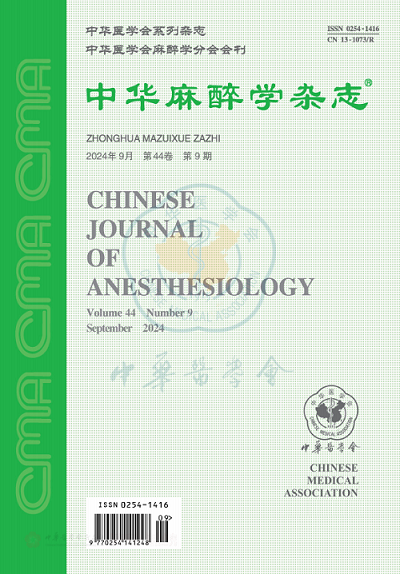Comparison of effects of different labor analgesia regimens on perinatal mental state of parturients
Q4 Medicine
引用次数: 0
Abstract
Objective To compare the effects of sufentanil mixed with ropivacaine and ropivacaine alone for peripartum analgesia on perinatal mental state of parturients. Methods Three hundred and eighty-nine primiparous acquiring labor analgesia in our hospital from April 2016 to April 2019, of American Society of Anesthesiologists physical status Ⅰ or Ⅱ, at ≥37 weeks of gestation, aged 25-45 yr, were divided into 2 groups using a random number table method: ropivacaine group (R group, n=193) and ropivacaine mixed with sufentanil group (RS group, n=196). Epidural labor analgesia was performed with 1.5% ropivacaine in group R. Epidural labor analgesia was performed with 1% ropivacaine mixed with 0.5 μg/ml sufentanil in group RS.The Edinburgh depression scale (EPDS), multidimensional social support perception scale (MSPSS) and breast-feeding self-brief scale (BSES) were used to evaluate the maternal psychological status at 30 min after labor analgesia induction and 42 days after delivery. Results One hundred and sixty-one patients completed the study in group RS and 157 patients in group R. Compared with group RS, the EPDS score was significantly decreased, and the BSES score was increased at 42 days after delivery (P 0.05). Conclusion Compared with epidural labor analgesia with ropivacaine, epidural labor analgesia with sufentanil mixed with ropivacaine has a marked adverse effect on the perinatal mental state of parturients. Key words: Analgesia, obstetrical; Depression, postpartum不同分娩镇痛方案对产妇围产期心理状态影响的比较
目的比较舒芬太尼与罗哌卡因配伍和罗哌卡因单独用于围产期镇痛对产妇围产期精神状态的影响。方法采用随机数表法将2016年4月至2019年4月在我院分娩镇痛的美国麻醉师学会身体状况Ⅰ或Ⅱ级初产妇389例,妊娠≥37周,年龄25~45岁,分为2组:罗哌卡因组(R组,n=193)和罗哌卡因混用舒芬太尼组(RS组,n=196)。R组采用1.5%罗哌卡因硬膜外分娩镇痛,RS组采用1%罗哌卡因与0.5μ,采用多维社会支持感知量表(MSPSS)和母乳喂养自我简要量表(BSES)对分娩镇痛后30min和产后42d的产妇心理状况进行评价。结果RS组161例患者和R组157例患者完成了研究。与RS组相比,产后42天EPDS评分显著降低,BSES评分升高(P<0.05)。结论与罗哌卡因硬膜外分娩镇痛相比,舒芬太尼复合罗哌卡因硬膜外分娩镇痛对产妇围产期精神状态有明显的不良影响。关键词:镇痛、产科;抑郁症,产后
本文章由计算机程序翻译,如有差异,请以英文原文为准。
求助全文
约1分钟内获得全文
求助全文

 求助内容:
求助内容: 应助结果提醒方式:
应助结果提醒方式:


